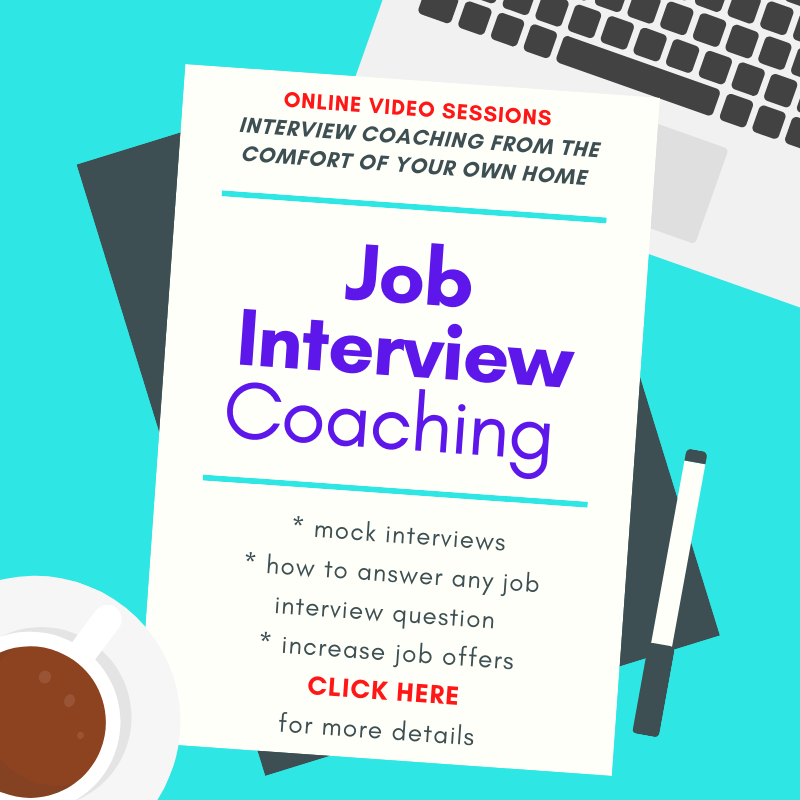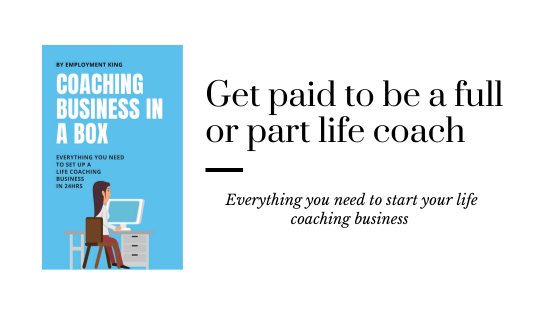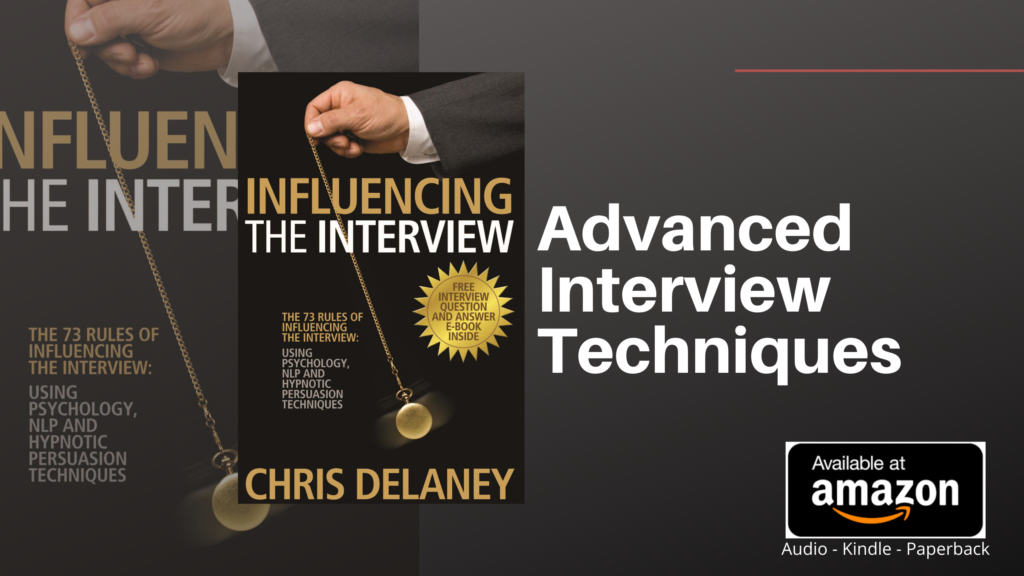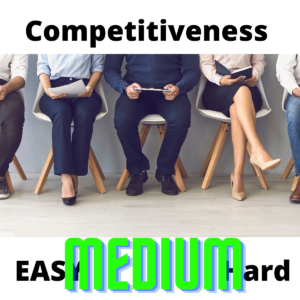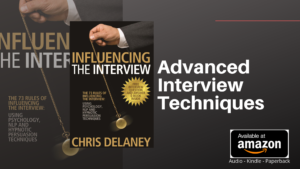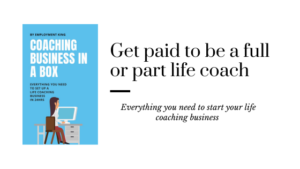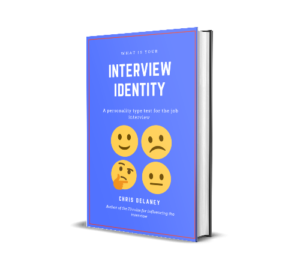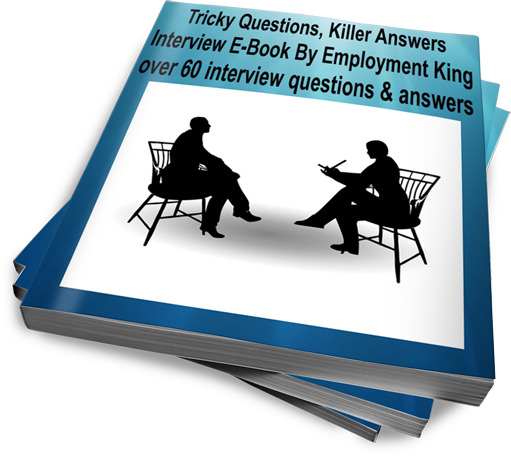All job sectors require managers.
Meaning that the ‘management’ job role is one of the most commonly advertised job roles, globally. The ‘manager’ position includes varying levels of leadership roles:
- Team leader/supervisor
- Team manager
- Project manager
- Area Manager/head of department
- Senior manager
- Business owners, Director, CEOs, etc
Even with management positions being in demand, competition for leadership roles is tough.
Some roles may require industry-related experience and knowledge, while other employers focus the job interview criteria entirely on management skills, as the manager skill/experience is transferable across job sectors.
Depending on the advertised position, an employer may require a leadership and management qualification. And some roles require specific training such as a Prince2 for a project management role.
But not always. Having a large number of sector experience is enough to move onto the management career ladder or possessing many years of managerial experience can outweigh a leadership certificate.
What is key, is to be viewed as one of the strong job interview identities. Being perceived as lacking confidence and/or a low level of industry or managerial competencies can only end with a job interview rejection.
Successful interviewees normally have one of the following four interview identities:
The Management Job Interview Process
As a general rule of thumb, a supervisor or team leader interview will consist of a single panel interview.
Middle management recruitment processes will often have a structured job interview followed by an informal interview.
For senior leadership roles, the employer is willing to spend more time, money and energy into the hiring of a suitable applicant (as the salaries and responsibilities for a high skilled position demand a detailed analysis of all applicants). Human resource departments, therefore, will design a full-day recruitment process:
- Interview presentation (the content is often sector-specific rather than managerial, but some presentations who be a talk-through of a proposed operational plan)
- Structured (panel) interview
- Group tasks
- Roleplay
- Informal job interview
In the main, all managerial and leadership interviews, for all levels of job role, will be undertaken by a panel of interviewers.
The panel interview is designed to reduce the effect of an unconscious bias, creating a fair interview process based on managerial competencies alone.
Panel interviews are often made up of:
- A member of the HR (human resource) team
- A senior staff member – often the managers direct manager (once appointed)
- A department team member – to ensure the level of industry knowledge
Increasingly, employers recruiting for managerial and leadership roles will outsource the recruitment of senior managers to an external specialist interviewing company.
The panel interview consists of around 10 managerial job interview questions – see below. And last for around 60 minutes.
This will be in the format of a structured job interview – every applicant will be asked the same job interview questions and answers will be cross-referenced against a job interview scorecard.
Interview presentations, commonly, take 15 minutes including a 5 minute Q&A session. Employers may give advance warning of a presentation, allowing an applicant to prepare their presentation in advance of the job interview. But some employers will state the presentation task on the day of the job interview giving candidates 10 minute notice period to prepare.
Tip – Always prepare for a potential presentation for all managerial job interviews
Group interviews are designed to observe soft skills; communication, teamwork, problem-solving and of course, for managerial roles, leadership skills.
The team task is often observed by several interviewers, all of whom will make notes on each group member. The recruitment team will view applicants’ temperament – who took the lead, did the applicant demonstrate an authoritative management approach or a laissez-faire management style?
The group task section last around 20 minutes, but can be up top 45 minutes in duration.
Roleplay. Increasingly popular, especially when the recruitment process is conducted by an outsourced interview company. The roleplay is seen as a vital step in the recruitment process.
For a management position, the 20 minute role-play is often an actor playing the part of a disgruntled team leader attending an appraisal or meeting. The actor will attempt to disrupt the meeting by stating that they need to get back to work due to an urgent deadline.
Employers observe the applicant’s response to the situation focusing on the candidate’s ability to work under pressure, their communication skills, creating authority, reasoning and remaining professional.
For many managerial candidates, this is the hardest test during the whole recruitment process and requires preparation and practice. Practice can be undertaken with a job interview coach.
Informal job interviews are often the last section of a recruitment process. Unlike the structured job interview where each candidate is asked the same questions, in an informal job interview (sometimes referred to as an unstructured job interview) employers generate questions based on the flow of the conversation that happens in the moment.
The idea here is for the interviewer to get to know the applicant; their personality, values, and leadership style.
This section of the interview is often a 1-2-1 talk with the potential employees future line manager and takes around 45 minutes to complete.
How to pass a managerial level job interview
Each of the various job interview sections for a managerial or leadership recruitment process is designed to check suitability. Employers look for:
- How the applicant’s temperament and managerial style fits in with the company culture
- The candidates level of managerial competencies – their knowledge and experience for leadership roles
- What added value each applicant can bring to the organisation, if recruited
- If required, their level of sector knowledge
- And, their level of confidence which is vital for any level of managerial job role
In short; level of knowledge and experience vs level of confidence. Which, together, create an ‘interview identity’.
To pass a management job interview applicants need to out-score the competition by confidently communicating their competencies.
High scoring job interview answers, for management job interviews, are gained through:
- Stating managerial models and theories as this shows understanding for the achievement of KPIs (key performance indicators) and project objectives
- Using real-life examples for problem-solving and technical interview questions as this evidences competencies
- Stating skills and experiences with confidence, using varied language approach which, research shows, increase authority
- Framing all answers in a solution-focused approach to build likeability
- Using management speak as language is associated with ability
Commonly Asked Interview Questions for Managers
Shortly, I will give you an explanation of how to approach key mangerial job interview questions.
First, the most commonly asked (generic) job interview questions can be found here: how to ace the job interview.
The management job interview is split into 3 sections:
- About you
- Management style and experience
- Skills and qualities
About you – interview questions
‘Why did you apply for this role?’
‘Tell me about your experience and how it relates to this position?’
‘What motivates you?’
‘About you’ questions are asked at the interview start, as an ‘ice-breaker’ question to help applicants relax into the job interview.
It is also a way for an employer to better understand the applicant and to assess them against the culture of the company, and their values.
Management style and experience – interview questions
‘How would you describe your management and leadership style?’
‘Give an example of managing a project from the initial conception stages to completion – what barriers did you face and how did you overcome these?’
‘Tell me about a time you have had to motivate an unmotivated team member?’
‘Have you ever had to deal with conflict within a team?’
Under the experience section, for some employers, interviewees will also be asked industry technical questions: ‘how would you (job duty)?’
Skills and qualities – interview questions
‘What management system are you familiar with?’
‘How do you prioritise tasks?’
‘Give an example of collaborating with a influential stakeholder?’
‘Which management tools do you utilise to achieve a project outcome?’
‘What is your approach to a stressful situation?’

Example answers to manager interview questions
In this final section, we have chosen some of the most commonly asked managerial job interview questions, breaking down each question to support applicants to create high scoring answers.
Tip – each employer requires a unique set of criteria. By identifying the job criteria helps in the creation of high scoring answers
Each answer is a guide. The successful interviewee will be able to take each example answer, editing this so it is relevant to their own experience.
Give an overview of your managerial experience?
The ‘overview’ question can be worded as:
- ‘Tell me how your skills and experience suit this position?’
- ‘Why have you applied for this role?’
- ‘Can you introduce yourself, focusing on your key achievements?
Each question, no matter how the employer states the question, is an open question. This allows the applicant a free-range in their approach to the question.
Often asked as the initial interview question, the interviewee doesn’t need to detail specific examples of technical knowledge. Rather this question should be seen as a mood-setter.
A mood-setter is created from the frame of the response. Generally speaking, applicants will be viewed as a person of interest or as a time waste, employable or unsuitable, knowledgable or lacking competencies.
The mood-setter is the filter the employer uses for the remainder of the interview. For a positive ‘interview identity’ employers will isten more intently, whereas for a negative perception, teh employer will be wanting to end the interveiw quickly.
It is therefore important to answer the ‘overview’ question by creating interigue.
Interigue, in a job interview, is created by getting the employer excited about:
- Duration in the industry; duration is associated with competencies
- Qualification level; high levels of qualification is linked to perceived knowledge
- Unique selling point; possessing an industry skill, that others don’t, is viewed as valuable (or profitable)
The interview formula is: Duration X qualification X USP
‘As a highly experienced manager specialising in (add USP) I can utilise my (duration as a manager/working in the industry) to (2nd USP) Qualified in (add highest qual level) I am able to use (knowledge) to (state outcome). In all my previous roles I have been able to (add 3rd USP)’
A unique selling point can relate to:
- Change management
- Turning around underperforming teams
- System changes to reduce on-cost
- Increasing profit
- Improving staff retention
- Decreasing overheads
- Breaking into new markets
- Taking a business global
- Achievement of strategic outcomes
- Project management
- Operational planning
How would you prioritise tasks?
The common mistake mangers make during a job interview is by answering questions with a signal answer.
Stating various facts, processes, examples highlights a wealth of knowledge required for senior managerial roles.
The ‘priority’ interview question is a good example of this.
‘How would you priorities tasks?’ can be asked in the following ways:
- ‘What is you approach to time-management?’
- ‘How do you organise your workload?’
- ‘Which time-management tools do you utilise?’
In many cases, the interviewee will state a tool or give an example. The answer meets the criteria and receives a medium score. Job offers, though, are offered to high scoring applicants.
Embedded into the answer should be reference to time management models, discussions around the appropriateness of tools and techniques, depending on the task/project and a summary of generic tools that may be required on the interview scorecard.
As an example an applicant may explain the Pareto Principle: 80-20 Rule. Vilfredo Pareto, an Italian economist, observed that 80% of the land in Italy was owned by 20% of the population. Later this same 80/20 rule was applied within the context of the workplace, where it was suggested that only 20% of your time (effort) is used to complete 80% of key task (results). “The Pareto Principle states that for many phenomena 80% of the output or consequences are produced by 20% of the input or causes” (Dunford et al., 2014).
Or an explant ion of the Time Management Matrix can be given to explain how you decide the order of completing tasks.
The time management matrix explains how task can be distributed into 4 quadrants, with each quadrant indicating the importance of the task.
Q1 Urgent/ important – includes upcoming deadlines, firefighting task, unforeseen problems. It is these task that need completing in the current moment as putting these off can result in a negative result IE not achieving a timebound KPI
Q2 Non-Urgent/Important – in this section you would collate long term projects, relationship building and all task that are key to the organisations or projects success but need a period of time to achieve
Q3 Urgent/non-important – includes low level emails (reminders to request a staff member to complete a task they are already aware of) meetings and general communications. These task, if many, can eat into the time need for actions in quadrant 1 & 2 Many of these task should be automated or delegated
Q4 Non-urgent/Non-important – task here are often a reason you give to yourself because you are procrastinating on another task. Many of the task here such as checking social media, should be deleted giving you additional time for other actions
Or an in-depth breakdown of a well sued tool can be explained, such as Diary Management.
The use of diary management can support a leader to manage their time which then improves the ability to undertake their role due to a reduction in stress “time management models and theories should be designed to focus on improving management skills and reducing psychological stress resulting from untimely completion of responsibilities and task” (Jinalee and Singh, 2018)
If a manager has works in an environment where they have to attend various meetings and events, as well as having timeframes for completing various task, using a comprehensive diary management system can assist in the self-management of workloads.
The use of the recurring appointments feature on calendars can save time and proactively manage time, tentative and confirmation of meetings ensures that you aren’t double booked and the use of a colour coding system allows a manger to easily see, when reviewing the month ahead, the types of task and their allocated time for upcoming appointments.
The diary can also need used to collect data, including time spent, to reflect on their self-management and to change processes to reduce time spent on important tasks.
It doesn’t matter which tools and models are stated, what is important is to show understanding of several models.
Example Answer
‘Time management, for me, is more than filling 8hrs of a working day with 8hrs worth of task. Instead managing time is a process of making the most of the time given in a day. If for example I had two completing deadlines I would (add time management model 1). When I review reoccurring business as usual tasks I (add time management model 2). In addition to these I use diary-management, automation, delegation and to-do list which always result in a high standard of work being completed on time.’
Give an example of working with stakeholders?
Stakeholders are groups of people who have a certain stake in the organisation “..stakeholders are those individuals or groups that depend on an organisation to fulfil their own goals and on whom, in turn, the organisation depends” (Johnson, Whittington and Scholes, n.d.) and come in various forms from a supplier, partner, customer, shareholder, government, unions, community members and managers, to name a few, and can be an organisation, social group or individual. Stakeholders can be internal or external.
To make an interview relevant, answer the ‘stakeholder’ question by giving an example of working with a stakeholder that the new company would collaborate with on a regular basis.
During the answer a manager needs to explain the complexities of working with stakeholders:
Each stakeholder has their own agenda and their own level of influence. A stakeholder can affect a business, this as an example could be in the form of a protest due to moral rights or a trade union going on strike, or be affected by a business – employees not being paid due to the organization going into liquidation.
In the sense the relationship between a stakeholder(s) and the organisation are intertwined. Managers then have to be aware of all stakeholders not just shareholders that often have a larger influence, and project how their actions could have wider implications on individual stakeholders “they argue that the role of management is to balance these stakeholder needs rather than simply focus on shareholders” (Henry, 2018)
Stakeholder Matrix
Stakeholders all have different impact on an organisation. It is useful to be aware of the influence of each stakeholder. This can be achieved by using a stakeholder power/influence matrix (Mendelow 1991)
Power is the influence in the organisation a stakeholder has. And, interest refers to a stakeholder’s willingness to influence “it is important therefore to understand the power different stakeholders have and their their likely attention to issues” (Johnson, Whittington and Scholes, n.d.)
| High Power, Low Interest | High Power, High Interest |
| Low Power, Low Interest | Low Power, High Interest |
The influence and interest of each stakeholder can vary depending on the task, project. In this sense, the mapping of stakeholders is always fluid and it should not be presumed that a stakeholder who didn’t act on one point of the organisations business wouldn’t then act on another “even where stakeholders have low interest, they can be moved into a high-interest space by their response to activities the company engages in that are attracting unwanted media attention” (Henry, 2018)
To answer the stakeholders question, split the reply down into three sections:
- List relevant stakeholders
- Explain the stakeholder matrix theory
- Give a real-life example
Example answer:
‘I know that the key stakeholders for this organisation will be (list stakeholders) When working with a stakeholder it is important to understand where they sit on the ‘stakeholder matrix’. For this I review each stakeholders level of power vs interest as this helps to predict their reactions to new projects, changes and communications. Therefore, allowing me to change my approach to create a successful outcome. An example of this was (add 1) situation 2) actions 3) outcome.’

What is your approach to project management?
Businesses have two ways of working, business as usual (working on current processes to create the businesses output) and via projects (a new change that requires a new set of processes. Projects are temporary but can become business as usual)
When asked about ‘project management’ the employer needs a manger who possess the ability to take on, and achieve, a new challenge.
The same question can be asked in the following forms, often depending on much project management is required for the advertised role:
- ‘Explain your understanding of project management?’
- ‘Give an example of managing a success project?’
- ‘What do you need to consider when starting a new project?’
For a project management interview, all questions will relate to the management of projects. For none-PM job roles there will only one or two questions relating to this topic.
The answer should be a detailed version of the following steps:
- Receiving and analysing a project brief
- Benefits and risks
- Cost of the project (and risk of overspend)
- Timescale vs quality of output (including quality check processes0
- Project scope
- Creating work packages
- Communications
Example answer:
‘I have managed many projects. When I receive a project brief from a (stakeholder) I breakdown the desired objectives into the working tasks (give an example relevant to your sector) Prior to taking on a new project I will the benefits vs risk, often utislising lessons learnt from previous projects. I also consider timescales and how quality processes will be implemented. One of the key questions is the scope of the project – if and where there is flexibility. An example of this would be (add example). Once the project has been accepted and then break tasks down into work packages. This includes a communication plan, setting up training if required and a project launch. ‘
How you approach the process of a culture change within an organisation?
The ‘change’ question is very popular as industries, due to globalization and rapid changing technical, including AI, results in operational models’ needing to be adapted to satay competitive.
More information of managing organisational change can be found here: organisational change
Operational management is the planning, organisation, implementation and reviewing of process to support an organisation to achieve its own KPIs. According to Bartol et al (1998), operations management “Is the function, or field of expertise, that is primarily responsible for managing the production and delivery of an organisation’s products and services.”
There are 3 commonly used operational management theories.
BPR – Business Process Redesign.
BPR is the process of redesigning (rather than just tweaking) an organisations processes, designed to reduce overheads and increase profit. In a fast paced world where technology advances at a rapid rate it is easy for a business, without realising, to find themselves pushed out of a competitive market.
For many years, the company yellow pages had a monopoly on the world of small business marketing. Each home in the UK was given a free annual copy of the yellow pages which advertised a wide range of local businesses. By the 90’s most households had access to the internet and search engines such as Google were fast becoming to go to for the general public to search for local businesses and services. Yellow pages were becoming a thing of the past. To stay competitive the yellow pages created yell.com an online version of the yellow pages. This required a complete overall of the business process which lead the company no longer offering a printed directory. Other businesses were slow to react to the massive and often quick changes created by technology and online systems. HMV dominated the high street music business but as more customers moved to the music download system HMV missed out on an opportunity to remain competitive in this new music era. Due to not drastically redesigning their operational process HMV started to have reduced sales, reduced business and reduced profits.
BPR is the overhaul of a business’s current processes, designed to make the business more efficient by reducing cost, automating systems and making staff (or machines) more productive. The redesign of a business’s processes can lead to staff lay-offs, disruption in the current flow of producing outputs and can have an expensive initial outlay. But when successful the BPR system will eventually increase profits.
Six Sigma
Six Sigma is a quality controlled process with a focus on increasing profit by following a 5 step quality control process system.
Six sigma is designed to reduce waste and defects in essence increasing output with a reduction in errors. Six sigma looks to use tools and methods to source dependable and reusable data. It states that a business process that produces less than 3.4 defects per 1 million chances is efficient and therefore anything outside of this is a defect.
To begin six sigma ask for a six sigma champion to lead a team to achieve a specific goal by analyzing the current practices, objectives and by identifying a faulty process. The team then analysis’s the current performance reviewing all inputs. Each input is then isolated and reviewed to see if the specific input is causing an error, thus identifying all input errors. Once an error(s) is identified the team will work to improve the process and adds controls to monitor and review the input and process.
After being introduce in the 1980s six sigma is highly recognized as a quality control methodology to increase output and reduce errors, which has led to an industry received qualifications (similar to how prince2 has become a recognized certificate for project management) Six sigma uses data to recognize the error before a team of practitioners solve the problem and embed a quality assurance process to reduce future errors.
Lean Manufacturing
Lean manufacturing is wide spread across a vast range of industries which shows the diversity and impact of these operational management theory.
Lean can be broken down into 3 stages; deliver values from a customer perspective, eliminate waste and continuous improvement (work, processes, people and purpose).
Lean has continued to evolve and develop overtime resulting in 5 common principles;
- Identify value. Customers purchasing a product or service that gives them value, something that allows them to solve a problem. As a business you need to think about your customer – what problem do they have? What solution do they require? What value can you add? By identifying the value you can create processes to achieve the desired customer value.
- Value stream mapping. Stage 2 is reflection, here you review current processes to identify what works and what doesn’t add value. At this stage you dig deep reviewing all aspects of the processes from input to output. This reflection stage allows an organization to understand how different teams have different influences in the process. If one team has an abundance of downtime is this due to their work ethic or a hitch in the production line? Process reviews may allow you to understand feedback loops; team A identify and report a gap, but how is this actioned? Who is responsible for checking the gap, who is responsible for the quality check and who is responsible for managing the situation? Any identified steps that don’t bring value can be eliminated from the process.
- Stage 3 looks at creating a continuous workflow. Embedding a process takes time but the end results can increase production and profits by having the whole team running a smooth well implement system that adds value at all stages. Each stage can be reviewed, created and implemented which allows organizations to look at specific areas of the process before looking at the whole process (which has too many elements to fully ensure value). Chunking a large process down into smaller chunks allows an origination to check for potential potholes, and to remedy these proactively rather than reactively. With an established workflow system you can now move on to the 4th stage creating pull
- Stage 4 creating a pull (or move away from making and storing goods in advance of orders to creating an on demand service). This system requires flexibility but also have cost saving benefits (especially for organizations to create physical products) An on-demand system allows customers to “pull” products on request. An example is on-demand book printing. Stage 4 can allow the organization to be flexible with their inputs.
- The final stage, stage 5, creates the everlasting cycle – continuous improvement. In lean you do not simply create a strong process and run it across the organization before sitting back and waiting for the profit sheet, instead you continuous review, amend and improve processes whenever you can. Here you can aim for perfection, and sometimes a small tweak can add tremendous value. Systematically you may review and amend process (using steps 1-4), or use employee and customer feedback to change your way of working, embed new technology and get rid of once good processes that no longer add value.
Example answer:
‘In my previous role the company undertake a change in terms of its (add values, customer market, product, processes) Leading on the change process I followed the (change process model) To begin (add detail) The barrier was (add potential problems) I solved this by (detail) which resulted in (positive outcome).’
How would you create a high-performing team?
For all managerial job interview questions there will be a question(s) around leadership and managerial style. Some will be specific like the ‘creation of a high performing team?’ or a question on ‘recruitment processes’ but may will be generic leadership questions.
- ‘What is your preferred leadership style?’
- ‘How do you motivate a team?’
- ‘Are you a manager or a leader?’
To give a detailed answer it is important to understand leadership theories.
All people, including leaders, have a natural way of working often defined by their temperament. Being motivated or stressed can change the way you manage people (and yourself.)
A natural leadership style will creative a supportive environmental for people who naturally respond well to this leadership style or on task/actions that suit the leadership environment created by the manager.
But due to the difference in team members personality makeup, the various task and actions individuals are required to complete (compared to having one set task) and if there is a set timeframe(s), managers need to adopt a combination of leadership approaches, choosing the correct managerial leadership style to implement for specific projects or vary the way they manage and motivate individual staff members, based on the way that team member needs to be led. Peter G Northhouse (Practice et al., 2019) explains that leadership is a process whereby an individual influences a group of individuals to achieve a common goal.
Hersey and Blanchard (Investopedia, 2019) talk about the leadership curve and how depending readiness of employees, the task and the relationship effects the maturity of those being led. An example of this is a new employee with a lack of experience which effects their confidence. They explain that a leader should mold their managerial style throughout 4 styles; delegating, participating, selling and telling to suit the employee. A staff member who needs managing in one style as a norm, may need a different leadership style depending on the circumstances (staff redundancy effecting moral, as an example)
Some organisations will adopt a top-down environment; the company will be operated my way. The recruitment process and company values will represent the desired environment and employees who work well under this management style will flourish, whereas other employees will often move on effecting staff retention at the initial change process period.
Other organisations will adopt a leadership style that is aimed to be supportive to employees, with a goal to improve staff retention thus improving output. The supportive leadership style is aimed are leading people in the best way that a particular individual can be led. The skills approach model explains that there a distinct skill set; conceptual – the big picture, how task, teams fit into the organisation as a whole, human – cooperative team member and technical – process, method, procedure or technical driven activities (Schedlitzki and Edwards, n.d.)
The model goes on to explain how a senior manager spends more time on strategic activities; planning and organizing (conceptual). Whereas middle managers spend more time supervising (human)
Leadership styles
The first leadership style we will look at is the Autocratic leadership style. This is a “do it my way or the highway” leadership style. It excels in industries that have high output through repetitious actions and falls down in creative industries. As a controlled leadership style it doesn’t allow for innovation from its employees, instead it uses well used practices and instils stick procedures. It is a perfect leadership style for sectors or situations that need immediate actions such as armed forces, environmental disaster response teams and even in high stressed jobs such as financial markets. The autocratic leader is rarely liked but can be respected and/or feared. Fearing a leader can seem a strange want, but fear can be a tool for producing results, as the employee is motivated to achieve a target rather the face the wrath of the autocratic manager. This leadership style in the wrong industry can result in massive staff turnover which has a direct effect on profits.
Going to the other extreme our next leadership style, Laissez-Faire, is a more open, flexible and creative leadership style. This leadership style works well with motivated and experienced teams who can use creativity to achieve results. The lack of structure and day to day leadership can be demoralising for some, but other employees find the freedom liberating and excel using their own skill base, rather than following a set process, to achieve the project objective. Often small teams, family companies will adopt the Laissez-Faire approach as a small team, compared to a multi-layered team, often feel emotional connected to company, as if they are one of the family. When having to react to a problem, the Laissez-Faire leader can fall down, as having to react quickly to a serious situation of requires a strong forceful leader that gets result, and gets results quickly.
Along the same lines, but not as laid-back as Laissez-Faire, is the Paternalistic leadership style. This leadership style recognises that collectively a team has a larger pool of resources, tools and experiences. The Paternalistic sees themselves as a head of a family, but unlike Laissez-Faire, they make the decision as does the Autocratic leader. This leadership style encourages loyalty, trust and obedience. The paternalistic leader communicate in a way to get employees to action willingly.
A democratic leader is a delegating leader. They like staff to take the responsibility and to feel empowered. The democratic manager wants to get task completed, they will communicate the vision, listen to ideas from the team and encourage them (the staff) to take action – they encourage leadership in others. This style works well with staff working in outreach where the employee doesn’t have direct daily contact with a line manager. But for an employee who values constant direction and support this style can be highly demotivating and can lead to costly mistakes as the manger has a hands-off approach. Another downside to this leadership style is the manager can take too much time coming to a decisions, as they take on-board each team members opinion which is some situations, long term projects can be effective, but with short deadline task a quick and decisive decision may be required.
In the job interview, an applicant needs to show an understanding of leadership styles, the impact on employees and how they adopt approaches depending on culture and duties or an organization.
”To be effective, a leader must therefore match his/her behaviour to the situation he/she faces” (Schedlitzki and Edwards, n.d.)
Situational leadership theory contains 4 behavioral styles
Directing – this is a directive approach, where clear detailed communication and processes are used to ensure a key objective. An example of this would be working within the arm forces
Coaching – here the leader gives guidance in a directive way but also has a focused on employees needs and motivation. This style works well on complex task and within a matrix management structure
Supporting – when an employee(s) knowledge and skills are key to achieving goals. The leader will use their people skills to support and motivate the team. This style can be seen in retail or the voluntary sector
Delegating – a hands-off approach where the leader has little involvement in the day to day task. This leadership style only works with highly competent staff. You will see this style in senior managers who have a reasonability to manage managers or project managers who oversee contractors.
Example answer:
‘There isn’t one signal management style that works to create a (add relevance to the interview question IE a high-achieving team). As a strong leader I understand the value of using a top-down process for (add sector related situation) or a coaching approach when (add sector related situation). With new staff it is important to build up their confidence through taking them through the four behavioral styles as stated in ‘situational leadership theory’. With this in mind I vary my management approach depending on the ability of the team, external and internal stresses IE during a change process, and the demand of the project. An example of this is time – the duration to achieve an objective helps me to choose between an autocratic or paternalistic leadership style.’
Job Interview Advice
What personal development opportunities have you undertaken recently?
‘I’ve been reading books’
‘I volunteer’
‘I recently attended an online webinar’
These three common replies to the ‘self-development’ question are low scoring answers.
The employer isn’t look for a list of small actions you have took. Instead, the interviewer is attempting to understand your position of being a life long learner.
As with all managerial questions, it shows a high level of knowledge when you can quote related models and theories.
KOLB LEARNING CYCLE
To learn something new, the learner has to, according to Kolb (1984) go through a 4 stage cycle;
- Experience
- Reflection
- Conceptualisation
- Experimentation.
Kolb believes that each stage supports the next “The cycle encourages managers and other learners to perceive a whole process of learning and to identify those parts of the process in which – for whatever reason – individuals are dependant on or stuck in particular parts of experimental awareness” (Vince, 1998)
The experience stage allows the learner to experience something new or experience a new perspective of an existing experience. Reviewing the experience against your current understanding and looking at differences helps the learn to reflect on the learning. Conceptualization helps to build on a current idea or creates a new idea. And finally, experimentation happens as the leaner embeds their idea in business as usual. The learning cycle can be entered at any of the 4 stages, but to be fully effective the learner does need to visit is stage “The approach emphasises the importance of the synthesis between individual’s behaviour and the evaluation of their actions” (Mullins, 2005)
Within this model are 4 learning styles.
Kolb believes that individuals have different ways to learn “The research claim that an understanding of ones learning style will enhance learning effectiveness, whether as a trainee or as a tutor” (Mullins, 2005)
But the cycle doesn’t cover the importance of learning from the experience of others “regardless of how much reasonability we take for learning from our own experience and learning with others, we also still have to rely a great deal on learning from the experience of others” (Vince, 1998)
The cycle doesn’t cover how with an anxious group – fearful of making mistakes, which is common among leaners, they aren’t ready to fit within the cycle as their emotional starting point is different to that of a confident leaner “the emotions at this point can take the learning in two directions – one that promotes learning and the other that discourages it” (Vince, 1998)
Kolb states that continuums; process (approach) and perception (how we think/feel about the task) It is the combination of the two continuums that create the learner styles:
| Active Experimentation (Doing) | Reflective Observation (Watching) | |
| Concrete Experience (Feeling) | Accommodating (CE/AE) | Diverging (CE/RO) |
| Abstract Conceptualization (Thinking) | Converging (AC/AE) | Assimilating (AC/RO) |
Each of the 4 learner styles approach learning differently. There isn’t a wrong and right learner style, they just vary due to the learner’s natural preference “An integrated and effective learner will be equipped to manage all four styles, even though the learner may have a preference for one” (Mullins, 2005)
- Accommodating learner are the hands-on learners that use intuition and creatively. They move away from chunking down into details and us other people’s statistics before talking a practical approach to a task
- Diverging leaners are idea generators. They observe before use creativity to problem solve. They are more of an observer then a doer, but their strength comes from having the ability to use perspective
- Converging learner are practical learners who focus on technical task. They like to experiment and prefer processes then people. They can come up with ideas, theories and solutions
- Assimilating leaners are logical individuals who require specific details to work well. They work well with abstract formats and learn through reading and seminars. They are more practical focused then people focused
By understanding that individuals learn in different ways and reflecting on yourself and your team, you can redesign activities to have a higher impact on the distance learnt “Exploration of the cycle has helped managers to see that learning can occur either from an individual’s rationality or their emotional reality” (Vince, 1998)
Example answer:
‘I am passionate about my personal and professional development. Through my career I constantly reflect on my areas of development and look to improve my skillset. I use Kolbs learning style theory which is in 4 sections; experience, reflection, conceptualisation, experimentation. An example of this was when I (started a new job/took on new reasonability) As I (name a duty or task that you lacked skill in) I released that my knowledge in this area was lower then I though it was. I reflected on (add specific) and decided to (add learning action) which resulted in (outcome).’
Sources:
Johnson, G., Whittington, R. and Scholes, K. (n.d.). Exploring strategy. 11th ed. Pearson.
Henry, A. (2018). Understanding strategic management. Oxford: Oxford University Press.
Mullins, L. and Christy, G. (2016). Management and organisational behaviour. Harlow, England: Pearson.
stakeholder collaboration building bridges for conservation. (2000). 1st ed. Washington DC: World Wildlife Fund.
Northouse, P. (n.d.). Leadership. 5th ed. sage.
Schein, E. and Schein, P. (n.d.). Organizational culture and leadership. 4th ed.
Lock, D. and Scott, L. (n.d.). Gower handbook of people in project management. 10th ed. gower.
Dunford, R., Su, Q., Tamang, E. and Wintour, A. (2014). The Pareto Principle.
Jinalee, N. and Singh, A. (2018). A descriptive study of time management models and theories.
Bartol, K. and Martin, D. (1998). Management. Boston: McGraw-Hill Co.
Slack, N., Brandon-Jones, A. and Johnston, R. (n.d.). Operations management.
Womack 1990
Cleverism. (2019). Making Your Business More Competitive with Business Process Reengineering (BPR). [online] Available at: https://www.cleverism.com/business-competitive-business-process-reengineering-bpr/ [Accessed 7 Oct. 2019].
HISTORY. (2019). Ford’s assembly line starts rolling. [online] Available at: https://www.history.com/this-day-in-history/fords-assembly-line-starts-rolling [Accessed 7 Oct. 2019].
Dana, B. (2012). SWOT Analysis to Improve Quality Management Production. Procedia – Social and Behavioral Sciences, 62, pp.319-324.
Bxlnc.com. (2019). [online] Available at: http://bxlnc.com/download/The-Six-Sigma-Revolution.pdf [Accessed 7 Oct. 2019].
Pettinger, T. (2019). The decline of Yellow Pages | Economics Help. [online] Economicshelp.org. Available at: https://www.economicshelp.org/blog/27868/economics/the-decline-of-yellow-pages/ [Accessed 7 Oct. 2019].



